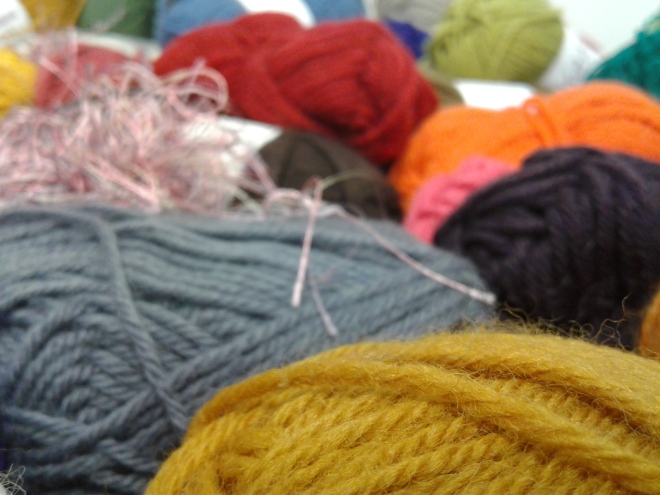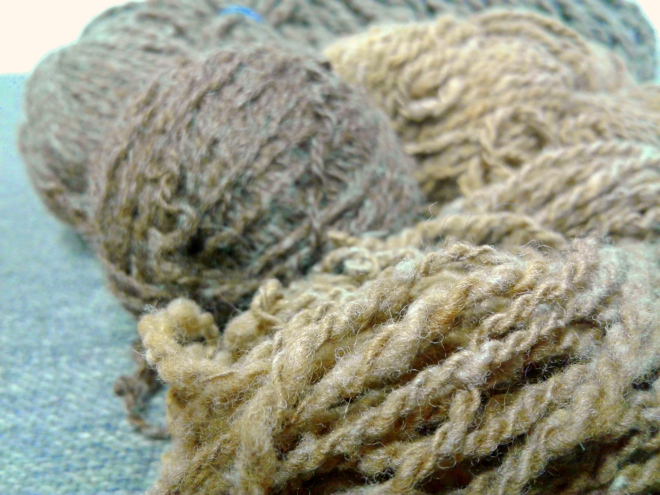Today we are spotlighting Brenda. We asked her to share a little bit about herself, her passion for knitting, and how she got involved with Knitting in Recovery. What she wrote was honest, powerful, and touching. Thank you, Brenda, for helping our program succeed in helping other women in recovery:
Hi,
I am so flattered that you are interested in writing a blog post about me. But as I sit down to write about myself, I find it very difficult. But I’ll give it a shot.
I was born in a lovely small town on the southwestern shores of Lake Michigan. My mother married my father when she was 18 and he was 21. Due to infertility problems, I didn’t come along until 12 years later, which probably was for the best. Back then, women didn’t have much access to birth control and it wasn’t unusual to have 4 or more children closely spaced. Although that’s what my mother thought she wanted, she came to realize that my father was an emotionally and verbally abusive man, who also was a moderately-functioning alcoholic. Once I was born, she decided that we would be better without him and filed for divorce: a very brave thing to do in 1961. My father moved about 30 miles away, and although he continued to see me sporadically for the next couple of years, by the time I was three, he had a new family and stopped seeing me altogether. I received a few letters from him over the years with invitations to meet, but he never followed through. The last time I saw him was in a funeral home after he passed.
Although my mother’s family lived about 20 miles away, it was like another world, and one to which she did not want to return. Life was very tough in those early years, but the two of us made a nice little family. She always emphasized education, and I loved school. I was always very independent and felt that a good education was the means to a better life. For a while, life continued on a fairly normal path, and eventually I went to college in Chicago, a city that I love.
Aside from some pot smoking, I stuck to alcohol for partying. And honestly, I was a very moderate drinker with no signs of an addiction problem. In fact, I was the girl who stayed sober enough to watch out for drunk girlfriends or be the designated driver. But when I was 30, I broke up with a long-term boyfriend. I was completely devastated. It hurt so badly that I spent hours curled up in a ball crying. But worst of all, I couldn’t sleep. That’s when I bought my first bottle of scotch to “help” me sleep.
But it got bad very fast. I refer to the next seven years as “crawling into a bottle, and then trying to crawl out, often unsuccessfully.” I lost my job and my apartment and had to move back home. Like most recovery paths, there were several starts and stops. I did one inpatient rehab and several outpatient. After one stint, I was able to stay sober for 6 months. But I became arrogant and stopped going to meetings. I was finally called into Human Resources at my new job because someone smelled alcohol on my breath. I was given the opportunity to keep my job if I attended outpatient treatment. I accepted, but also made the decision at that moment to stay sober.
That was March 17, 1997. This time, I was successful because I truly embraced the first three steps for the first time in my recovery journey.
Life didn’t become perfect overnight, and in fact, I feel like I am still rebuilding from things I lost during those seven years. One thing that had continued to allude me was a career that I liked. Surprisingly to me and others (it’s a long story for another time), I obtained my Masters of Science in Accounting. I now work on a freelance basis, since my health keeps me from working full-time, or meeting the demands of a conventional accounting firm (more about that coming).
My knitting history is not uncommon. My mother learned to knit from one grandmother and to crochet from the other. She taught me to knit when I was young, and I knit a couple of scarves and quit. When I first began recovery, I spent a lot of time alone (aside from meetings and work), and I needed to keep my mind busy. I read a lot and also decided to try knitting again. This was the period when fun-fur scarves were popular. I discovered that I enjoyed it and wanted to branch out. This was when knitters were venturing into the internet (although a few years before Ravelry, a knitter’s dream website). I am not artistic, but love color. So many indie dyers were popping up with beautiful yarns, and I taught myself to knit socks.
It seems that the addictive part of my brain kicked in, although this time, it was yarn, especially sock yarn, that had replaced alcohol. I joined yarn clubs and felt an adrenalin rush when the boxes showed up in my mailbox. If I knit from now until eternity, I would never get through the stash I amassed.
In 2016, I was working furiously to finish a baby sweater for an upcoming family baby shower (Elizabeth Zimmerman’s baby surprise jacket which never disappoints), and I noticed my right hand becoming sore. At my age, I expect to have a little arthritis, so I wasn’t alarmed. But one morning, I woke up to find that my right hand was essentially frozen in one position. This scared me enough to go to the doctor. The diagnosis: rheumatoid arthritis (RA). If you aren’t familiar with RA, it’s actually not arthritis in the conventional sense, but instead, a chronic, incurable auto-immune disease in which one’s immune system attacks joints and organs. This was life-changing news, to say the least. And once again, I revisited Step #1: I am powerless over this disease, and if I don’t work a recovery program of some kind, my life will become unmanageable.
It’s been 18 months since my RA diagnosis, and although my hand is much better, I am still working hard to accept many of the physical limitations to my mind and body caused by the disease and medications. Luckily, I haven’t needed narcotics for pain, but I am aware that my addictive-prone brain may be all too happy to have access to mood-altering substances again in the future.
As I wrote, acceptance has been especially difficult for me. One day, I was looking at my yarn stash and finding myself drowning in self-pity for all the beautiful yarn that I would never use. But we in recovery know that self-pity is a dangerous emotion. At some point, several years ago, I had read about a woman who was teaching women in recovery to knit as part of their program. A few Google searches later, I found Knitting in Recovery. I was immediately heartened as I looked through your Facebook page and found photos, not only of women who were knitting and crocheting for themselves, but also for those who are less fortunate. As they say, deciding what to do with a great deal of my stash became a no-brainer. And before I knew it, my dear husband was lugging several boxes of yarn to the post office. I feel as though this was an appropriate way to work the 12th step.
It turns out that I am not yet finished with yarn. After several months, my hand became more flexible, and I have gone back to knitting, albeit, not as fast or as prolific. I’m more careful about choosing projects, and find that socks are too hard on my hands. Instead, I make fingerless mitts, which I wear almost constantly these days to keep my hands warm and more flexible. Plus, more people see the lovely yarns I’m using: win-win, right?
I continue to work my recovery, although I have found Al-Anon to be more helpful as I revisit step #4. It also helps me to understand, that, while my father was absent during my life, his alcoholism was still in the background, working its devious behavior on both my mother and me.
In closing, I will say that, while I can’t really say that I am happy that I became an alcoholic, I am nevertheless grateful to have become acquainted with the 12 steps. I think they are brilliant tools for living a good life. I also want to stress that I understand that I have not begun to face the hurdles that so many others in recovery have or continue to face. I meet people around the tables that remind me of this with every visit. I wish I could hug everyone and make it better. But perhaps you’re ladies will find a least a little happiness as you pick up knitting needles or a crochet hook, and create a lovely hat, scarf, or shawl that will give you a sense of accomplishment. Because we women are strong, and we deserve all the happiness life has to share.
Fondly,
Brenda
This slideshow requires JavaScript.


































